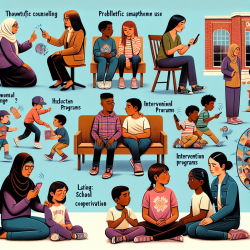Understanding Cochlear Implants: A Practitioner’s Guide to Improved Outcomes
Cochlear implants have revolutionized the way we approach hearing loss, especially in children with profound hearing impairments. However, certain clinical conditions, such as inner ear malformations or brain abnormalities, can significantly affect the outcomes of cochlear implantation. Recent research, as presented in the article "Cochlear Implant Outcomes and Genetic Mutations in Children with Ear and Brain Anomalies," provides valuable insights into these challenges and offers guidance for practitioners aiming to improve their skills and outcomes.
The Role of Neuroimaging
High-resolution computed tomography (HRCT) and magnetic resonance imaging (MRI) play a crucial role in diagnosing ear and brain anomalies in children who are candidates for cochlear implants. These imaging techniques help identify malformations that could impact the success of the implantation and subsequent language development. Practitioners should ensure these diagnostic tools are part of the preoperative evaluation process.
Understanding Genetic Factors
Genetic mutations, particularly in the GJB2 gene, have been identified as significant contributors to hearing loss. The research highlights that children with these mutations generally have positive outcomes post-implantation. However, the presence of other genetic factors, such as SLC26A4 mutations, can complicate the prognosis. Practitioners should consider genetic testing as part of the evaluation to tailor rehabilitation programs effectively.
Managing Expectations and Outcomes
While cochlear implants can offer substantial benefits, outcomes can vary significantly. Factors such as the age of implantation, the presence of additional disabilities, and the type of ear or brain anomalies can influence results. Practitioners should work closely with families to set realistic expectations and develop individualized rehabilitation plans.
Encouraging Further Research
The study underscores the need for ongoing research to better understand the interplay between genetic mutations, ear and brain anomalies, and cochlear implant outcomes. Practitioners are encouraged to stay informed through continuous education and collaboration with research institutions to enhance their practice and improve patient outcomes.
To read the original research paper, please follow this link: Cochlear Implant Outcomes and Genetic Mutations in Children with Ear and Brain Anomalies.










